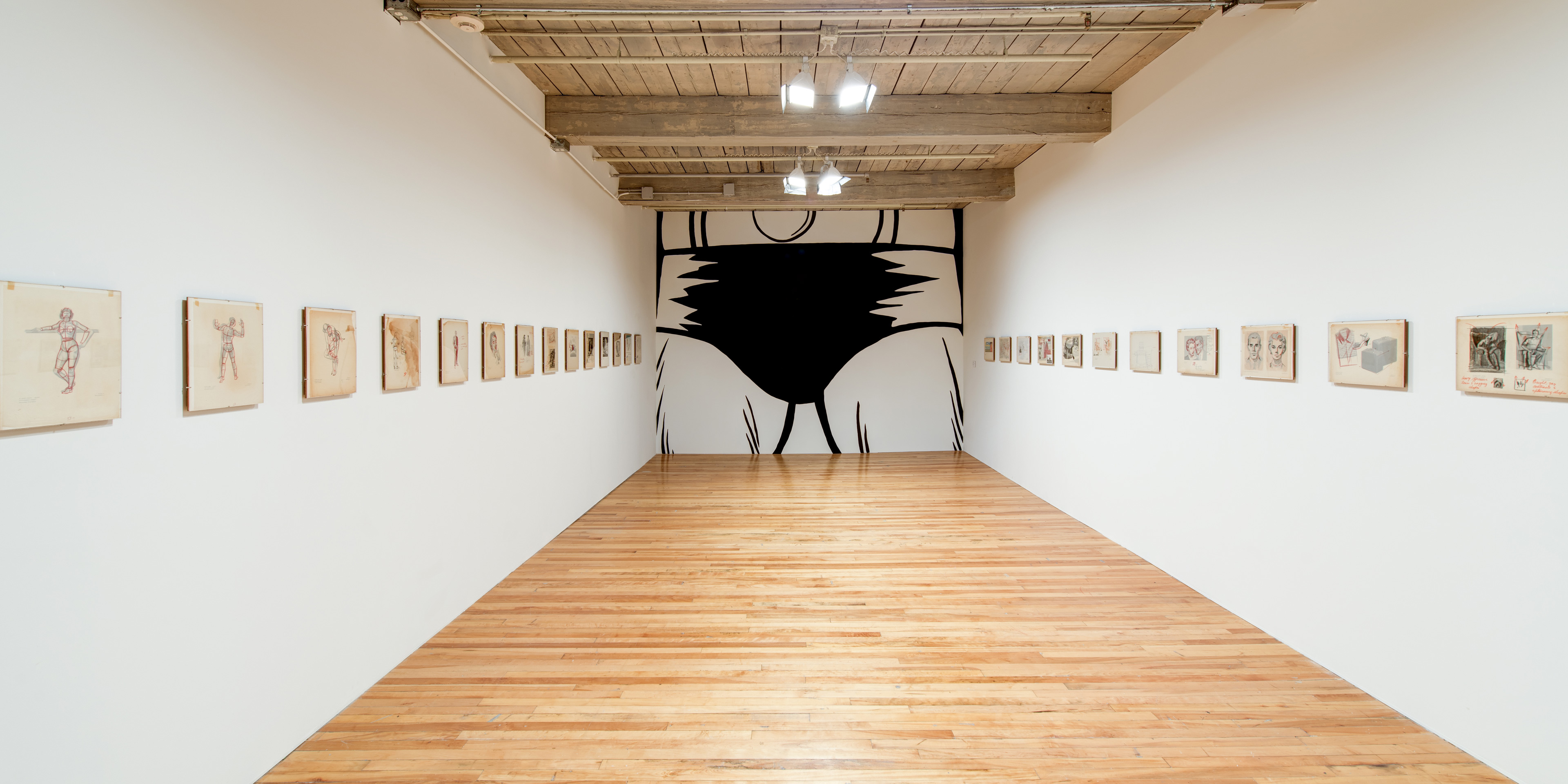 Exhibition
Exhibition- March 25, 2015 - February 1, 2016
- Galleries
“…The show of the summer.” — Boston Globe
“Rich and funny.” — artnet news
“Expertly executed.” — Albany Times Union
Since the 1970s, Jim Shaw has created a vast body of work spanning diverse media and reference points. Shaw’s work mines the essentials of American cultural detritus, from comic books, pulp novels, and album covers, to vintage advertisements, movie posters, and noise rock. Originating from these sources, the work often features recurring characters including himself, his friends, fictional superheroes, politicians, and film stars. Combining text and the painted figure with objects and drawings from his unconscious, Shaw’s works consistently illustrate purposely bad puns, while twisting politics, religion, and belief into one long dream sequence.
What was he thinking? Click here to use the Jim Shaw art app as you view the galleries.
For the exhibition at MASS MoCA, Shaw focused on over-arching themes of fallibility – fallen heroes, collapsed economies and political figures, and the idea of sin and doomsday predictions. The centerpiece of Entertaining Doubts was a series of large-scale paintings that Shaw began in 2004, utilizing old theatrical backdrops that he cuts apart. Turning painting into architecture, these works essentially function as political cartoons, populated by figures such as Barbara Bush, 20th-century religious prophet Aleister Crowley, and Dan Quayle, with themes ranging from the seven deadly sins and the four horsemen of the apocalypse to the great deluge. Continuing this series for MASS MoCA, Shaw created a new work, Not Since Superman Died. Using a 24×49-foot shredded backdrop, this piece focused on an injured and endangered Superman along with video imagery of floods. The superhero in peril is a well-known motif, but here Shaw never shows us the heroic escape, turning Superman into a mere mortal.
In addition to these banner works, Shaw also exhibited additional paintings and objects as well as a series of films relating to his Oism project. “Oism” is a false religion created by Shaw, one that draws from the history of American religious practices from Mormonism to Scientology. Supposedly founded in the 1840s by Annie O’Wooton, who discovered a prophesy about “O,” Shaw’s religion centers on a virgin who gave birth to herself at the dawn of history and brought writing and agriculture to society. “I” – a stand-in for patriarchy/ego – eventually toppled this matriarchal religion. Shaw weaves a believable tale, but mostly presents us with the idea that his religion, like all religions, comes from the imagination of its inventor. In this way, Shaw can criticize what has become the business of faith in contemporary society. The films in this series vary – one is part of a prog-rock opera light show; another has a 1970s earth mother performance vibe to it, recalling early experiments with modern dance; a third echoes low-budget horror film dream sequences; and a fourth records a men’s secret society initiation ritual.
Whether through paintings, video, or objects, Shaw’s work steadfastly reminds us that the end is near and that reality is absurdly plausible.
This exhibition is supported by the Horace W. Goldsmith Foundation, the Massachusetts Cultural Council, Blum & Poe, Metro Pictures, Simon Lee Gallery, Atelier 4 Inc., and ArtNet.




